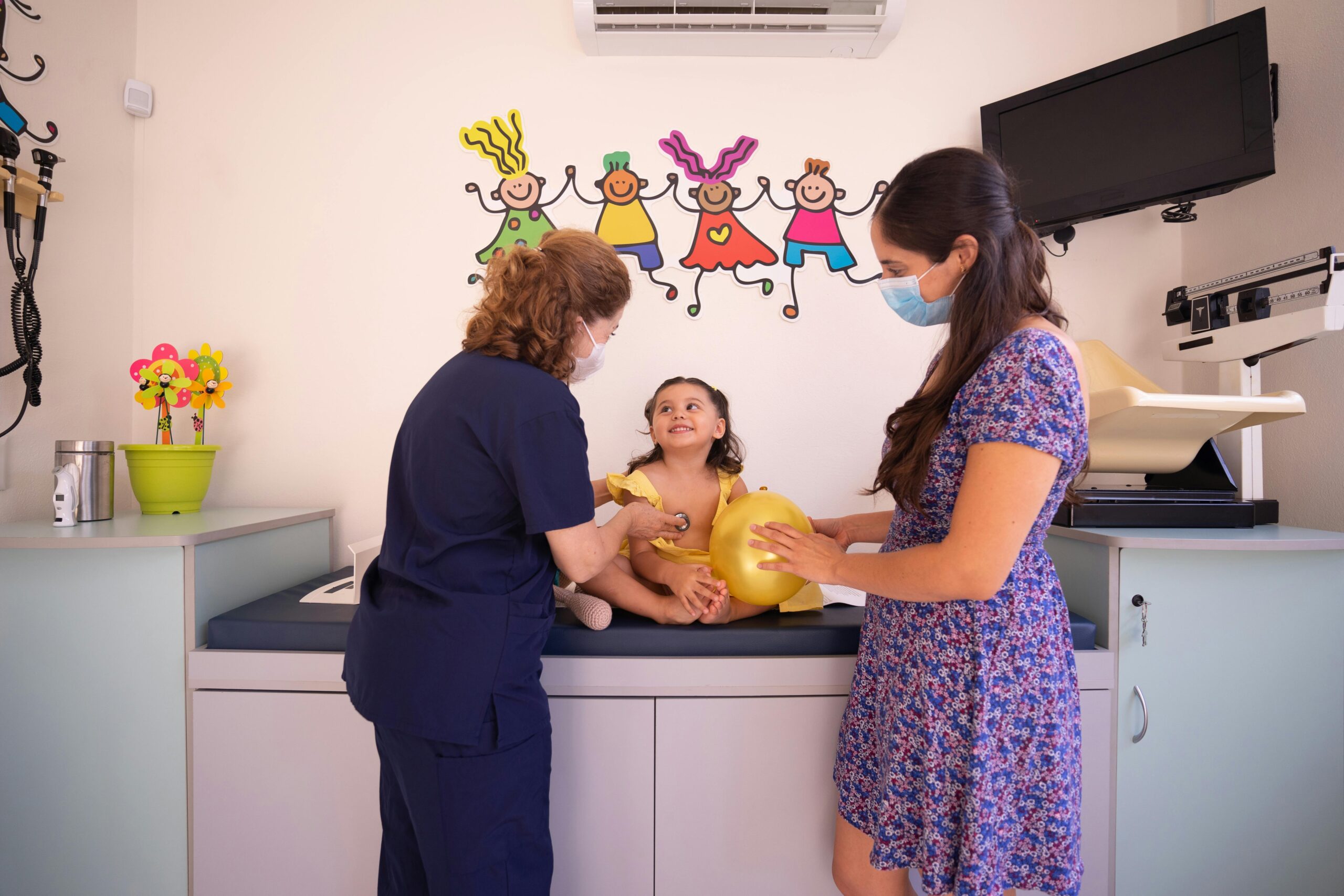As a caregiver, your child’s health and well-being are paramount. When confronted with complex medical conditions like meningioma brain tumors, gaining a thorough understanding of the disease, its management, and available resources becomes essential. This guide aims to provide you with valuable insights and practical tools to support your child effectively throughout their health journey.
🌟 Understanding Meningioma: What Every Caregiver Should Know
Meningiomas are among the most common types of brain tumors, arising from the meninges—the protective membranes covering the brain and spinal cord. While often benign and slow-growing, meningiomas can pose significant challenges depending on their size, location, and rate of growth. Understanding meningiomas, their causes, symptoms, diagnosis, and treatment options empowers you to make informed decisions and provide the best possible care for your child.
🧠 What Exactly is a Meningioma?
A meningioma is a tumor that develops from the meninges, the three protective layers surrounding the brain and spinal cord. Although most meningiomas are benign (non-cancerous), they can still cause significant health issues by pressing on adjacent brain tissue, nerves, or blood vessels. Meningiomas are the most common primary brain tumors in adults, accounting for approximately one-third of all intracranial neoplasms. They can occur at any age but are more prevalent in adults between 30 and 70 years old and are more common in women.
Imagine the brain and spinal cord as a delicate symphony, with the meninges acting as the protective casing that ensures everything functions harmoniously. A meningioma is like an unexpected note that disrupts this harmony, potentially affecting various parts of the symphony if not managed appropriately.
📊 Understanding Meningioma Grades
Meningiomas are classified into grades based on their microscopic appearance and growth behavior:
- Grade I (Benign): The most common type, comprising about 80% of cases. These tumors grow slowly, have well-defined borders, and are less likely to recur after removal. Regular monitoring is essential to assess their progression.
- Grade II (Atypical): These tumors exhibit a higher growth rate and are more prone to recurrence after treatment. They may display more aggressive features under microscopic examination.
- Grade III (Anaplastic or Malignant): The rarest and most aggressive type, these tumors grow rapidly and can invade nearby brain tissue. They have a higher likelihood of recurrence and poorer prognosis.
Understanding the grade of a meningioma is crucial as it influences the treatment approach and prognosis. Caregiver tools that track symptoms and health data can help you actively participate in your child’s healthcare decisions, ensuring timely interventions when necessary.
🔬 What Causes Meningioma?
The exact cause of meningiomas remains under investigation, but several factors have been identified:
- Genetic Mutations: Most meningiomas arise due to mutations in the NF2 gene on chromosome 22, which normally helps regulate cell growth. These genetic changes lead to uncontrolled cell proliferation in the meninges.
- Radiation Exposure: Exposure to ionizing radiation, especially during childhood, increases the risk of developing meningiomas. Radiation therapy to the head is a known environmental risk factor.
- Genetic Conditions: Certain hereditary disorders, such as Neurofibromatosis type 2 (NF2), Gorlin syndrome, and Cowden syndrome, significantly elevate the risk of developing meningiomas.
Understanding these causes underscores the importance of regular health monitoring. By tracking your child’s health data, you can aid in early detection and intervention, potentially mitigating the impact of the tumor.
⚠️ Recognizing Risk Factors
While meningiomas are relatively rare in children, certain factors can increase the risk:
- Age and Gender: More common in adults aged 30-70 and in females. However, they can occur at any age and in both genders.
- Hormonal Influences: The higher incidence in women suggests that female hormones may play a role in tumor development.
- Family History: Genetic conditions like NF2 significantly elevate the risk, especially in families with a history of such disorders.
Being aware of these risk factors enables you to stay vigilant. By monitoring health data, you can create a safer environment for your child and address any concerns promptly.
📋 Identifying Symptoms Early
Meningiomas often grow slowly and may not cause noticeable symptoms initially. As they expand, they can press on different parts of the brain or spinal cord, leading to a variety of symptoms:
- Headaches: Persistent headaches that worsen over time, especially in the morning.
- Seizures: Sudden and uncontrolled electrical disturbances in the brain.
- Vision Changes: Blurred vision, double vision, or loss of peripheral vision.
- Hearing Loss: Partial or complete hearing impairment, often accompanied by ringing in the ears.
- Memory Difficulties: Challenges with short-term memory and cognitive functions.
- Weakness in Limbs: Reduced strength or coordination in arms or legs.
Monitoring these symptoms is crucial. Utilizing health monitoring tools can help you detect subtle changes in your child’s well-being, enabling you to seek medical advice before minor issues escalate.
🔍 How Is Meningioma Diagnosed?
If a meningioma is suspected based on symptoms, healthcare providers may use several diagnostic tools:
- Magnetic Resonance Imaging (MRI): Provides detailed images of the brain and spinal cord, helping to identify the size and location of the tumor.
- Computed Tomography (CT) Scan: Useful in detecting calcifications within the tumor and assessing its relationship with surrounding structures.
- Biopsy: In some cases, a biopsy may be performed to determine if the tumor is benign or malignant.
Keeping detailed records of diagnostic tests and results is essential. These records help you stay informed about your child’s health status and facilitate effective communication with healthcare providers.
💉 Treatment Options: Navigating the Path Forward
The treatment of meningiomas depends on various factors, including the tumor’s size, location, grade, and the child’s overall health. The primary treatment options include:
🏥 Observation (“Wait and Watch”)
For small, asymptomatic meningiomas that are not causing any immediate health issues, doctors may recommend regular monitoring. This approach involves periodic imaging studies to assess the tumor’s growth and ensure timely intervention if necessary.
🔪 Surgery
Surgical removal is the primary treatment for meningiomas, especially when they are accessible and causing symptoms. The goal is to achieve a Gross Total Resection (GTR), which involves removing the entire tumor along with any affected surrounding tissues. However, the feasibility of surgery depends on the tumor’s location and its relationship with critical structures like blood vessels and nerves.
Surgical Approaches:
- Convexity Meningiomas: Typically easier to access and often amenable to complete removal.
- Parasagittal Meningiomas: More complex due to proximity to major blood vessels like the sagittal sinus.
- Skull Base Meningiomas: Require advanced surgical techniques to avoid damaging cranial nerves and other vital structures.
☢️ Radiation Therapy
Radiation therapy is employed in cases where surgery is not feasible or as an adjunct to surgical treatment. It is particularly useful for tumors that cannot be completely removed or are of a higher grade.
Types of Radiation Therapy:
- External Beam Radiation Therapy (EBRT): Delivers radiation from outside the body to target the tumor.
- Stereotactic Radiosurgery (SRS): A precise form of radiation that targets the tumor while minimizing exposure to surrounding healthy tissue.
- Hypofractionated SRS: Delivers higher doses of radiation over a few sessions, suitable for larger tumors.
💊 Systemic Treatment
While systemic therapies like chemotherapy are not commonly used for meningiomas, certain targeted therapies and immunotherapies are being explored in clinical trials. These treatments aim to target specific genetic mutations or pathways involved in tumor growth.
Current Research:
- VEGF Inhibitors: Target blood vessel growth to starve the tumor.
- Somatostatin Receptor Agonists: Exploit the presence of specific receptors on tumor cells.
- Immune Checkpoint Inhibitors: Enhance the body’s immune response against tumor cells.
📈 Understanding Survival Rates
Survival rates for meningioma patients are generally favorable, especially for benign tumors. Factors influencing survival include:
- Tumor Grade: Lower-grade tumors have better outcomes.
- Complete Removal: Achieving GTR significantly reduces the chance of recurrence.
- Age and Overall Health: Younger patients tend to have better survival rates.
Effective health monitoring and timely treatment interventions contribute to improved survival rates. By diligently tracking health data, you support your child’s long-term wellness and enhance the effectiveness of treatment plans.
⚠️ Potential Complications to Watch For
Meningiomas can lead to various complications depending on their location and size:
- Vision Problems: Blurred or double vision, loss of peripheral vision.
- Hearing Loss: Partial or complete hearing impairment.
- Balance Difficulties: Issues with coordination and stability.
- Cognitive Changes: Memory loss, difficulty concentrating.
- Neurological Deficits: Weakness or numbness in limbs, speech difficulties.
Keeping a detailed record of your child’s symptoms helps identify potential issues early. Early detection through diligent tracking can prevent complications from becoming severe, ensuring timely medical interventions.
🛠️ Effective Management Strategies for Meningioma
Managing meningioma involves a comprehensive and tailored approach, addressing both the physical and emotional aspects of your child’s well-being. Collaborating with healthcare professionals and utilizing available resources can significantly enhance the effectiveness of your caregiving efforts.
🏥 Medical Treatments and Therapies
🔪 Surgical Interventions
Surgery remains the cornerstone of meningioma treatment. The extent of surgical resection is crucial in determining the likelihood of recurrence. The Simpson Grading System is used to classify the extent of tumor removal:
- Simpson Grade I: Complete removal of the tumor, its dural attachment, and any involved bone.
- Simpson Grade II: Complete removal of the tumor and coagulation of the dural attachment.
- Simpson Grade III: Complete removal of the tumor without removing or coagulating the dural attachment.
- Simpson Grade IV: Subtotal resection of the tumor.
- Simpson Grade V: Biopsy only.
Higher Simpson grades correlate with higher recurrence rates. Achieving a lower Simpson grade (I or II) is associated with better long-term outcomes.
☢️ Radiation Therapy
Radiation therapy is often used as an adjunct to surgery or as a primary treatment for inoperable tumors. It helps control tumor growth and reduce the risk of recurrence. Modern radiation techniques like SRS and hypofractionated SRS offer precise targeting, minimizing damage to surrounding healthy tissue.
💊 Systemic Therapies
While not standard for meningiomas, systemic therapies are being investigated in clinical trials:
- VEGF Inhibitors (e.g., Bevacizumab): Show promise in reducing tumor growth by inhibiting blood vessel formation.
- Somatostatin Receptor Agonists (e.g., Pasireotide): Target specific receptors on tumor cells to inhibit growth.
- Immune Checkpoint Inhibitors (e.g., Nivolumab): Enhance the immune system’s ability to fight tumor cells.
🧘 Physical Therapy and Rehabilitation
For children experiencing neurological deficits or mobility issues due to meningioma or its treatment, physical therapy is essential. Tailored exercise programs can help improve strength, coordination, and overall mobility, promoting independence and enhancing quality of life.
📚 Educational Support
Children undergoing treatment for meningioma may face learning challenges, especially if the tumor affects cognitive functions. Specialized educational support, such as Individualized Education Plans (IEPs), can help address these difficulties.
- Developing an IEP: Collaborate with educators to create a customized educational plan that accommodates your child’s unique needs.
- Assistive Technology: Utilize tools like speech-to-text software, audiobooks, and interactive learning apps to support your child’s education.
- Tutoring Services: Provide additional academic support through private tutoring or specialized programs.
📱 Leveraging Technology for Better Management
Incorporating technology into your caregiving routine can significantly enhance the management of meningioma. Digital tools offer efficient ways to track and organize health data, ensuring that no important detail is overlooked.
Caregiver Tools: Simplifying Health Monitoring
Utilizing health monitoring apps or digital journals can help you keep track of your child’s symptoms, medications, appointments, and overall health status. These tools facilitate better communication with healthcare providers and ensure timely interventions.
Key Features of Caregiver Tools:
- Symptom Tracking: Log daily symptoms, pain levels, and any changes in your child’s condition.
- Medication Reminders: Ensure that medications are administered consistently with customizable reminders.
- Appointment Scheduling: Keep track of medical appointments, therapy sessions, and important dates.
- Data Sharing: Share health data seamlessly with healthcare professionals for informed decision-making.
- Educational Resources: Access a library of resources and articles related to meningioma, providing you with the knowledge needed to advocate effectively for your child’s care.
By leveraging these tools, you can enhance your ability to manage meningioma, ensuring that your child receives comprehensive and timely care.
📝 Practical Tips for Caregivers
Managing meningioma requires dedication, organization, and a proactive approach. Here are some practical tips to help you navigate this journey effectively:
📒 Maintain a Detailed Health Journal
Documenting your child’s daily symptoms, growth patterns, and any changes in behavior or physical condition is invaluable. A detailed health journal provides your healthcare providers with essential information to tailor treatment plans accurately.
- Daily Logs: Record symptoms such as headaches, seizures, vision changes, and mobility issues.
- Growth Tracking: Monitor changes in limb or facial growth to identify patterns.
- Behavioral Observations: Note any shifts in your child’s mood, energy levels, or cognitive function.
📱 Utilize Mobile Apps
Health monitoring apps can help organize and analyze health data, making it easier to identify trends and communicate with your healthcare team.
- Organized Data: Centralize all health-related information in one accessible location.
- Trend Analysis: Use data visualization features to identify patterns over time.
- Efficient Communication: Share relevant data with healthcare providers to facilitate informed discussions during appointments.
🏥 Regular Medical Check-Ups
Consistent consultations with specialists ensure that your child’s condition is closely monitored and managed effectively.
- Scheduled Appointments: Keep track of all medical appointments using calendar features in health monitoring apps.
- Specialist Coordination: Ensure that all healthcare providers are informed about your child’s current health status and treatment progress.
- Proactive Management: Address potential complications early through regular monitoring and timely interventions.
📚 Stay Informed
Keeping up-to-date with the latest research and treatment options empowers you to make informed decisions about your child’s care.
- Subscribe to Medical Journals: Stay informed about new studies and advancements in meningioma treatment.
- Participate in Support Groups: Engage with other caregivers to share experiences and learn from their journeys.
- Attend Workshops and Seminars: Enhance your knowledge through educational events focused on meningioma and related conditions.
By integrating these strategies into your caregiving routine, you can provide comprehensive care that addresses both the medical and emotional needs of your child.
💖 Empowering Caregivers: Building a Supportive Network
Being a caregiver for a child with meningioma is both rewarding and challenging. Building a strong support network and utilizing available resources can make a significant difference in your caregiving journey.
🤝 Connecting with Support Groups
Joining support groups allows you to connect with other parents facing similar challenges. Sharing experiences, advice, and emotional support can provide comfort and practical solutions to common caregiving issues.
- Local Support Groups: Look for support groups in your community where you can meet other caregivers in person.
- Online Communities: Platforms like Facebook, Reddit, and dedicated meningioma forums offer spaces to share and learn from others globally.
- Parent Networks: Engage with parent networks through hospitals, clinics, or nonprofit organizations focused on brain tumors.
Being part of a support group can alleviate feelings of isolation and provide a sense of community, knowing that others understand your experiences.
🌐 Accessing Online Resources
Online platforms offer a wealth of information on meningiomas, including the latest research, treatment options, and caregiver tips. Resources like health monitoring apps not only help in managing health data but also provide access to a community of caregivers and healthcare professionals.
- Educational Websites: Visit reputable websites like the American Brain Tumor Association (ABTA) or the National Brain Tumor Society (NBTS) for comprehensive information on meningioma.
- Webinars and Virtual Conferences: Participate in online events to stay updated on the latest advancements and connect with experts in the field.
- Informative Articles and Blogs: Read articles from medical journals, caregiver blogs, and health organizations to gain diverse perspectives on managing meningioma.
Utilizing these resources ensures that you are well-informed and equipped to make the best decisions for your child’s health.
💪 Advocating for Your Child’s Needs
Empowering yourself with knowledge enables you to advocate effectively for your child’s healthcare needs. Effective advocacy ensures that your child receives the necessary support and resources to thrive.
🗣️ Engage in Open Communication with Healthcare Providers
- Prepare for Appointments: Write down questions and concerns before each medical visit to ensure all topics are addressed.
- Seek Second Opinions: If you have doubts about a diagnosis or treatment plan, don’t hesitate to seek a second opinion from another specialist.
- Stay Informed: Understand your child’s diagnosis, treatment options, and potential outcomes to engage in informed discussions with healthcare providers.
🏫 Ensure Educational and Social Support
Children with meningioma may require specialized educational support to address learning difficulties resulting from associated neurological impairments.
- Develop IEPs: Collaborate with educators to create Individualized Education Plans (IEPs) that cater to your child’s unique learning needs.
- Advocate for Accommodations: Ensure that your child receives necessary accommodations in school, such as extended time for tests or modified assignments.
- Encourage Social Interaction: Facilitate opportunities for your child to engage with peers through extracurricular activities, support groups, or social events tailored to their interests and abilities.
🔧 Utilize Available Resources
- Nonprofit Organizations: Organizations like the American Brain Tumor Association offer resources, advocacy tools, and community connections.
- Legal Assistance: Seek legal advice if needed to ensure that your child’s rights are protected in educational or medical settings.
- Financial Support: Explore grants, insurance options, and financial assistance programs to help manage the costs associated with meningioma treatments and therapies.
By advocating for your child’s needs, you play a crucial role in ensuring they receive comprehensive care and support, enabling them to lead fulfilling lives despite the challenges posed by meningioma.
📚 Educational Support and Tools
Children diagnosed with meningioma may experience learning difficulties, especially if the tumor affects cognitive functions. Collaborating with educators to create individualized education plans (IEPs) ensures that your child receives the necessary academic accommodations to thrive.
📝 Developing an IEP
An Individualized Education Plan (IEP) is a tailored educational program designed to meet the unique needs of a child with disabilities. For children with meningioma, an IEP can address various challenges, including:
- Learning Disabilities: Cognitive impairments or developmental delays may require specialized teaching strategies and resources.
- Physical Limitations: Mobility issues or chronic pain can necessitate adaptive equipment, modified classrooms, or flexible scheduling.
- Emotional and Social Support: Counseling services or social skills training can help your child navigate social interactions and build self-esteem.
👩🏫 Collaborating with Educators
- Regular Meetings: Schedule regular meetings with your child’s teachers and school administrators to discuss progress and adjust the IEP as needed.
- Provide Medical Information: Share relevant medical information with educators to help them understand your child’s condition and its impact on learning.
- Advocate for Necessary Accommodations: Ensure that your child’s school implements the accommodations outlined in the IEP, such as extra time for assignments or a quiet space for tests.
🛠️ Utilizing Educational Tools and Resources
- Assistive Technology: Tools like speech-to-text software, audiobooks, or interactive learning apps can support your child’s educational needs.
- Tutoring Services: Private tutoring or specialized programs can provide additional academic support, helping your child keep up with their peers.
- Parental Involvement: Engage in your child’s education by assisting with homework, attending school events, and maintaining open communication with teachers.
By prioritizing educational support, you help your child overcome learning challenges and achieve their academic potential, fostering a positive and supportive learning environment.
🌈 Balancing Emotional Well-Being
Chronic conditions like meningioma can take a toll on both your child’s and your family’s emotional health. Balancing emotional well-being is crucial in ensuring a healthy and supportive home environment.
💬 Encouraging Open Communication
- Create a Safe Space: Encourage your child to express their feelings and concerns without judgment. Let them know it’s okay to talk about their emotions.
- Active Listening: Pay attention to what your child is saying and validate their feelings. This builds trust and helps them feel understood.
- Express Empathy: Show empathy by acknowledging your child’s struggles and offering reassurance and support.
👩⚕️ Seeking Professional Counseling
- Individual Therapy: Professional counseling can help your child develop coping strategies, manage anxiety, and address any emotional challenges resulting from meningioma.
- Family Therapy: Family counseling can improve communication, resolve conflicts, and strengthen the support system within the household.
- Support Groups: Joining support groups for families dealing with meningioma can provide a sense of community and shared understanding, reducing feelings of isolation.
🧘 Prioritizing Self-Care
Caring for a child with meningioma can be physically and emotionally demanding. Prioritizing your own well-being is essential to maintain the energy and resilience needed to support your child.
- Take Breaks: Ensure you have regular breaks to rest and recharge, preventing caregiver burnout.
- Engage in Hobbies: Pursue activities that bring you joy and relaxation, helping to balance the stresses of caregiving.
- Seek Support: Lean on friends, family, or professional support services when needed, recognizing that seeking help is a sign of strength.
🧘 Promoting Positive Coping Mechanisms
- Mindfulness and Relaxation: Practices like meditation, deep breathing, or yoga can help manage stress and promote emotional well-being.
- Physical Activity: Encourage your child to engage in physical activities that they enjoy, which can boost mood and reduce anxiety.
- Creative Outlets: Activities like drawing, writing, or playing music can provide a healthy outlet for expressing emotions and processing experiences.
Balancing emotional well-being ensures that both you and your child can navigate the challenges of meningioma with resilience and a positive outlook, fostering a supportive and nurturing environment.
📱 Utilizing Digital Tools for Caregiving
In today’s digital age, technology offers innovative solutions to support caregivers in managing their child’s health effectively. Digital tools streamline the caregiving process, enhance communication with healthcare providers, and provide access to valuable resources.
🛠️ Caregiver Tools: Enhancing Caregiving Efficiency
Health monitoring tools and apps can significantly improve the management of meningioma by centralizing health data and facilitating better communication with healthcare professionals.
Key Features of Caregiver Tools:
- Symptom Tracking: Log daily symptoms, pain levels, and any changes in your child’s condition. This detailed tracking helps identify patterns and triggers, enabling proactive management.
- Medication Reminders: Stay on top of your child’s medication schedule with customizable reminders. This feature ensures that treatments are administered consistently, reducing the risk of missed doses.
- Appointment Scheduling: Keep track of medical appointments, therapy sessions, and other important dates. Caregiver tools send timely reminders, helping you stay organized and prepared for each visit.
- Data Sharing: Share health data seamlessly with healthcare professionals, ensuring that your child’s medical team has accurate and up-to-date information for informed decision-making.
- Educational Resources: Access a library of resources and articles related to meningioma, providing you with the knowledge needed to advocate effectively for your child’s care.
By utilizing tools like these, you can enhance your caregiving efficiency, ensuring that all aspects of your child’s health are meticulously managed and documented.
📈 Benefits of Digital Health Tools
- Organization: Centralize all health-related information in one accessible location, reducing the likelihood of missing important details.
- Efficiency: Save time by automating tasks like medication reminders and appointment scheduling, allowing you to dedicate more time to your child’s care.
- Data-Driven Insights: Analyze health data to identify trends and make informed decisions about your child’s treatment plan.
- Enhanced Communication: Facilitate better communication with healthcare providers by providing them with comprehensive and organized health records.
📘 Conclusion: Your Role in Supporting Your Child’s Health Journey
Navigating the complexities of meningioma requires dedication, knowledge, and the right tools. As a caregiver, your proactive approach and commitment to understanding your child’s condition are paramount in ensuring their health and happiness.
Key Takeaways:
- Stay Informed: Understanding meningioma empowers you to recognize symptoms early and seek timely interventions.
- Utilize Technology: Tools like health monitoring apps simplify health tracking, making it easier to manage your child’s condition effectively.
- Build a Support Network: Connecting with support groups and accessing online resources provides emotional support and practical advice.
- Collaborate with Healthcare Professionals: Regular consultations with specialists ensure that your child’s treatment plan is tailored to their unique needs.
- Prioritize Emotional Well-Being: Balancing your child’s and your family’s emotional health is essential for a supportive and nurturing environment.
By leveraging health monitoring tools, staying informed about the latest treatment options, and building a supportive network, you empower yourself to provide the best possible care for your child. Collaborate closely with healthcare professionals, advocate for your child’s needs, and embrace the resources available to you.
At Digital Elevate, we are dedicated to supporting caregivers through innovative solutions designed to simplify health monitoring and enhance your ability to care for your child. Together, we can navigate the challenges of meningioma and work towards a healthier, happier future for your little one.
Stay connected with our blog for more insights on child health and wellness. Share your experiences or ask questions in the comments below—we’re here to support you every step of the way!
📖 References
- Ostrom QT, Gittleman H, Fulop J, Liu M, Blanda R, Kromer C, et al. CBTRUS Statistical Report: Primary Brain and Central Nervous System Tumors Diagnosed in the United States in 2008-2012. Neuro Oncol (2015) 17 Suppl 4:iv1–iv62. doi: 10.1093/neuonc/noz150
- Ostrom QT, Cioffi G, Gittleman H, Patil N, Waite K, Kruchko C, et al. CBTRUS Statistical Report: Primary Brain and Other Central Nervous System Tumors Diagnosed in the United States in 2012-2016. Neuro Oncol (2019) 21(Suppl 5):v1–v100. doi: 10.1093/neuonc/noz150
- Wen PY, Huse JT. World Health Organization Classification of Central Nervous System Tumors. Continuum (Minneap Minn) (2017) 23(6, Neuro-oncology):1531–47. doi: 10.1212/CON.0000000000000536
- Christensen HC, Kosteljanetz M, Johansen C. Incidences of gliomas and meningiomas in Denmark, 1943 to 1997. Neurosurgery (2003) 52(6):1327–1333; discussion 1333-1324. doi: 10.1227/01.NEU.0000064802.46759.53
- Magill ST, Young JS, Chae R, Aghi MK, Theodosopoulos PV, McDermott MW. Relationship between tumor location, size, and WHO grade in meningioma. Neurosurg Focus (2018) 44(4):E4. doi: 10.3171/2018.1.FOCUS17752
- Foster K. Retrobulbar neuritis as an exact diagnostic sign of certain tumors and abscesses in the frontal lobes. Am J Med Sci (1827-1924) (1911) 142(3):355. doi: 10.1097/00000441-191109000-00005
- Norden AD, Reardon DA, Wen PC. Primary central nervous system tumors: Pathogenesis and therapy. Berlin, Germany: Springer Science & Business Media (2010).
- Hashiba T, Hashimoto N, Izumoto S, Suzuki T, Kagawa N, Maruno M, et al. Serial volumetric assessment of the natural history and growth pattern of incidentally discovered meningiomas. J Neurosurg (2009) 110(4):675–84. doi: 10.3171/2008.8.JNS08481
- Rogers L, Barani I, Chamberlain M, Kaley TJ, McDermott M, Raizer J, et al. Meningiomas: knowledge base, treatment outcomes, and uncertainties. A RANO review. J Neurosurg (2015) 122(1):4–23. doi: 10.3171/2014.7.JNS131644
- Hammouche S, Clark S, Wong AH, Eldridge P, Farah JO. Long-term survival analysis of atypical meningiomas: survival rates, prognostic factors, operative and radiotherapy treatment. Acta Neurochir (Wien) (2014) 156(8):1475–81. doi: 10.1007/s00701-014-2156-z
- Dziuk TW, Woo S, Butler EB, Thornby J, Grossman R, Dennis WS, et al. Malignant meningioma: an indication for initial aggressive surgery and adjuvant radiotherapy. J Neurooncol (1998) 37(2):177–88. doi: 10.1023/a:1005853720926
- Buerki RA, Horbinski CM, Kruser T, Horowitz PM, James CD, Lukas RV. An overview of meningiomas. Future Oncol (2018) 14(21):2161–77. doi: 10.2217/fon-2018-0006
- Zwerdling T, Dothage J. Meningiomas in children and adolescents. J Pediatr Hematol Oncol (2002) 24(3):199–204. doi: 10.1097/00043426-200203000-00008
- Seizinger BR, de la Monte S, Atkins L, Gusella JF, Martuza RL. Molecular genetic approach to human meningioma: loss of genes on chromosome 22. Proc Natl Acad Sci USA (1987) 84(15):5419–23. doi: 10.1073/pnas.84.15.5419
- Ruttledge MH, Sarrazin J, Rangaratnam S, Phelan CM, Twist E, Merel P, et al. Evidence for the complete inactivation of the NF2 gene in the majority of sporadic meningiomas. Nat Genet (1994) 6(2):180–4. doi: 10.1038/ng0294-180
- Proctor DT, Ramachandran S, Lama S, Sutherland GR. Towards Molecular Classification of Meningioma: Evolving Treatment and Diagnostic Paradigms. World Neurosurg (2018) 119:366–73. doi: 10.1016/j.wneu.2018.08.019
- Smith MJ, Higgs JE, Bowers NL, Halliday D, Paterson J, Gillespie J, et al. Cranial meningiomas in 411 neurofibromatosis type 2 (NF2) patients with proven gene mutations: clear positional effect of mutations, but absence of female severity effect on age at onset. J Med Genet (2011) 48(4):261–5. doi: 10.1136/jmg.2010.085241
- Smith MJ. Germline and somatic mutations in meningiomas. Cancer Genet (2015) 208(4):107–14. doi: 10.1016/j.cancergen.2015.02.003
- Antinheimo J, Haapasalo H, Haltia M, Tatagiba M, Thomas S, Brandis A, et al. Proliferation potential and histological features in neurofibromatosis 2-associated and sporadic meningiomas. J Neurosurg (1997) 87(4):610–4. doi: 10.3171/jns.1997.87.4.0610
- Lo Muzio L. Nevoid basal cell carcinoma syndrome (Gorlin syndrome). Orphanet J Rare Dis (2008) 3:32. doi: 10.1186/1750-1172-3-32
- Mancuso M, Pazzaglia S, Tanori M, Hahn H, Merola P, Rebessi S, et al. Basal cell carcinoma and its development: insights from radiation-induced tumors in Ptch1-deficient mice. Cancer Res (2004) 64(3):934–41. doi: 10.1158/0008-5472.CAN-03-2460
- Aavikko M, Li SP, Saarinen S, Alhopuro P, Kaasinen E, Morgunova E, et al. Loss of SUFU function in familial multiple meningioma. Am J Hum Genet (2012) 91(3):520–6. doi: 10.1016/j.ajhg.2012.07.015
- Kimonis VE, Mehta SG, Digiovanna JJ, Bale SJ, Pastakia B. Radiological features in 82 patients with nevoid basal cell carcinoma (NBCC or Gorlin) syndrome. Genet Med (2004) 6(6):495–502. doi: 10.1097/01.GIM.0000145045.17711.1C
- Eng C. Will the real Cowden syndrome please stand up: revised diagnostic criteria. J Med Genet (2000) 37(11):828–30. doi: 10.1136/jmg.37.11.828
Disclaimer
Digital Elevate Partners and digitalelevatepartners.com are not licensed medical professionals. The content provided on our website and platforms, including opinions, information, and recommendations, is for informational purposes only and should not be considered medical advice, diagnosis, or treatment. Always seek the advice of a licensed healthcare provider for any medical concerns or decisions. Reliance on any information provided by Digital Elevate Partners is solely at your own risk.




